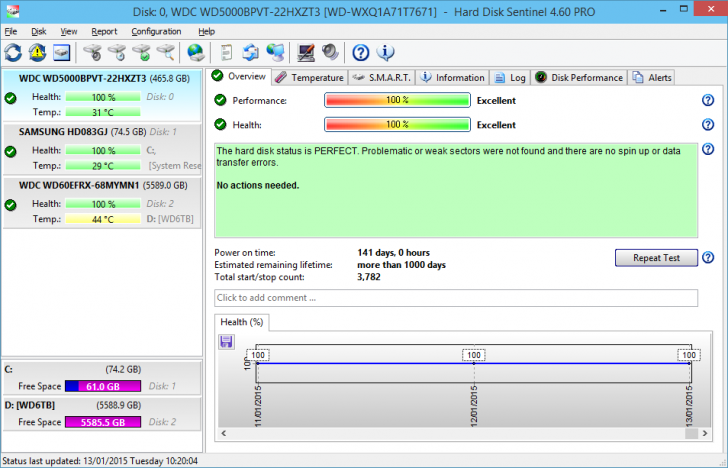

This reply was modified 1 year, 6 months ago by Bob99. I’ve probably not tried the exactly correct search term or terms. I seem to recall there being a rather involved forum or thread a couple of years ago here, but I haven’t been able to “resurrect” it via the site’s search tool. IIRC, the feeling was that chkdsk/R will ruin the SSD because of what it tries to do that’s over and above simply fixing the basic file structure on the drive. The consensus on Askwoody by the MVPs here has generally been that it’s OK to run chkdsk/F on an SSD, but DON’T run chkdsk/R. No problems encountered thus far since August of 2020.

I run it from an elevated command prompt using the /F and /V switches on my SSD.
#Check ssd health windows 10 cmd update#
I run chkdsk once a month after installing the latest monthly update and using the built-in disk cleaning utility to clean up the resulting “clutter” that’s invariably left behind. My choice is changing the permissions on the files to see the results of the scans. To me, this is six of one, half dozen of the other.

AND, the chkdsk log files’ default security permissions don’t allow a normal user to open them to look at them, you have to be an administrator to change the permissions to be able to open them. However, the System Volume Information directory is deliberately hidden by Windows, so you’ll have to unhide it with a special procedure. I used the > character instead of the back slash character due to ongoing issues with that character not always displaying properly within posts here on Askwoody. Or, if you don’t want to dig through the Event Viewer, there’s another way to see the results of the chkdsk scan.Ĭhkdsk creates a log of what it’s done every time it’s run in the following location: C:>System Volume Information>Chkdsk. Thanks in advance for any info on this rather unique event. l think I am in favor of not using chkdsk on a frequent schedule. My questions: Is there currently consensus that chkdsk on an SSD is harmful? I cannot figure out what is causing this behavior, and don’t know how to, or if it is even possible, to turn this “feature” off. I have, however, checked my drive with SMART each time chkdsk was run, and the SSD seems to be “OK”. It also ends with “100% complete”, but the rotating circle of dots continues to rotate with no particular end in sight and I have to manually turn off the desktop to restart. If I allow execution of chkdsk /f it appears to go through the normal checking sequence, although I do not get any detailed readout of the progress as you would by executing chkdsk from the command line. I read something some time ago that chkdsk was not particularly helpful for the health of an SSD. This message does not appear to be on any schedule and I am unable to detect any regularity to the timing.
#Check ssd health windows 10 cmd Pc#
My PC is about 5 years old and a few months ago on startup I started getting a message to use chkdsk /f after bootup with a message to “press any key within 10 sec on a countdown clock and “hit any key to stop chkdsk”. Hello all you bright and helpful folks out there.


 0 kommentar(er)
0 kommentar(er)
